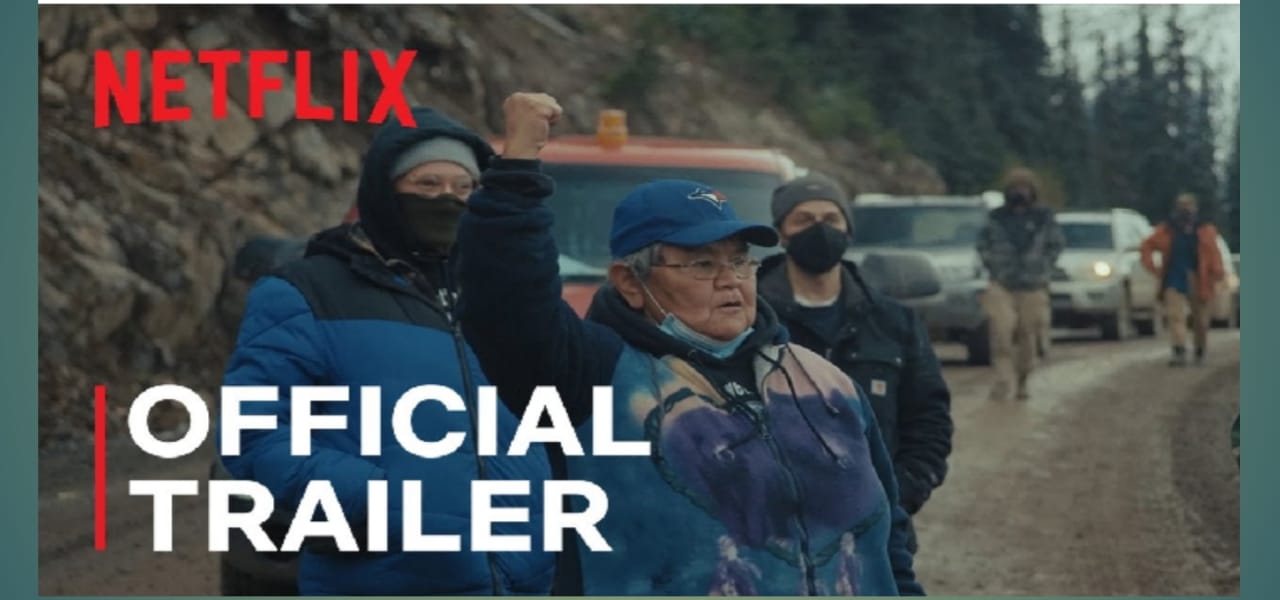
IntroductIon
One such recent film is Yintah, We will see Yintah movie Review & Release Date 2024 Netflix. which is a beautifully moving documentary that captures people’s attention and plunges them deep into northern British Columbia landscapes in breathtaking ways.
Yintah premiered on Netflix on [18 oct 2024] here was where the very particular story of Wet’suwet’en Nation had an easy access to audiences around the world. It provided quite a number of windfalls within the first two weeks due to poignant storytelling and real-time, ongoing conflicts that made worldwide news. Global reach itself makes Netflix an appropriate platform for this documentary, exposing not only the struggles of the indigenous but also making preservation of the environment in the light of industrial expansion worthwhile.
Yintah movie Release Date on netflix:
The wait is over the yintah movie release Date on Netflix 18 0CT 2024
The time for the launch of Yintah could not be more opportune. It already comes as international awareness concerning environmental crises surges, and with global interest in the rights of indigenous peoples, the film could not have come at a better moment. The proponents of the pipeline argue that it will bring economic development, employment, and energy security; however, the Wet’suwet’en and allies of theirs assert that it harms the environment and cultural heritage.
Storyline-
The Wet’suwet’en Hereditary Chiefs have been opposed to the project for quite a while, and at its heart is this long-standing opposition across the government that approved the building of the pipeline without key indigenous stakeholders’ consent. In these intricacies, the Wet’suwet’en system of governance-hereditary chiefs versus elected band councils-stands out: the nuances surrounding indigenous governance, land rights, and laws by order of the Canadian courts.
The documentary explores the various ways that resistance by the Wet’suwet’en leads to blockades, civil disobedience, and attracting national and international eco-activists. Wet’suwet’en have never ceded their land and have been established in a pivotal court decision regarding their title to that country: Delgamuukw v. British Columbia, 1997. Even with such legal recognition of title, however, the Canadian government and corporations push ahead with industrial projects on that land without the requisite rights of consent. It deftly navigates through this juridical and ethical paradox to raise a query regarding whether the contemporary industrial undertakings can exist with the native values and the customs. ands of years.It primarily emphasizes on projecting the environmental damage that the Coastal GasLink pipeline might be able to inflict upon this delicate biosphere via Yintah.
Construction of the pipeline cuts across large parts of the forest, which can devastate water courses and wildlife habitats. The Wet’suwet’en and their allies argue that once the natural habitat is destroyed, it may never be repairable, devastating not just the indigenous population who live there but the global climate crisis in its entirety
It is against this wider background that I see the Wet’suwet’en Nation v. the Canadian government: an aspect of far greater colonial legacy. Lastly, the film succeeds in showing how contemporary industrial and governmental ambitions keep reenacting similar patterns of exploitation and impunity over indigenous peoples since their colonization started.
These moments describe so much strength in grassroots movements and collective action amidst strong corporate and government interests
Cinematography and Direction yintah Movie
Cinematography and direction yintah movie – One of the striking aspects of Yintah is its visual storytelling. The documentary makes expert use of the stunning landscapes of northern British Columbia to immerse viewers in the Wet’suwet’en territory. Sweeping aerial shots of rivers, mountains, and forests provide a powerful contrast to the intrusive presence of industrial machinery and the cleared paths of the pipeline. A juxtaposition of the film is made between the natural beauty of the land and the stark reality of industrial development, thus pleading a visual argument for environmental protection.
On top of this, the perspectives of industry spokespersons and government officials are juxtaposed to place it in the broader context of the conflict.
Another strength of the film is the interviews with the director. In intimate talks with hereditary chiefs, elders, and community members, the emotional weight of the Wet’suwet’en fight is conveyed. Their voices are informative as well as deeply personal, allowing the viewer to get a sense of the stakes of this struggle. Yintah is a film that earned enormous acclaim, not least about its topicality and concerning how the indigenous people are handled. The cinema has drawn much attention because it can address a rather broad, yet intricately complex issue without diluting it to suit the status quo crowds. The Wet’suwet’en struggle is but one instance of a fight happening among many other indigenous communities worldwide, and Yintah will resonate with audiences who are concerned about environmental degradation and rights to marginalized communities. One of the most powerful strengths of the reception of the film lies in its effect on public discourse. Since its release, Yintah has generated heated debates on both the necessity to strengthen indigenous land protections and on the need for proper consultation and consensus-making among governments, corporations, and indigenous peoples. The film has served as an educational.
Yintah is far from being a documentary; rather, it constitutes a call for action. It puts before focus the urgency of speedy intervention in the methods of modern industrial development as it continues to bring infringement on the rights of indigenous peoples and the integrity of the environment. The release of this film on Netflix can now follow its story in front of a global audience that might not otherwise be reached with regard to these topics.
Conslusion
Yintah offers an invaluable perspective from an environmental activist’s point of view as well as indigenous sovereignty and intersections between the two. From the beautifully cinematic cinematography, deep personal interviews, and timely subject matter, Yintah challenges a viewer to reconsider its relationship with the land and with those who have protected it for millennia. It is a film that will leave a lasting impression: encouraging audiences to engage more deeply with the important issues Yintah so eloquently presents.
Yintah is set against the backdrop of industrial expansion and environmental crisis, presented as both a documentary and rallying cry for justice. Long from being over is the plight for indigenous land and environmental protection.


